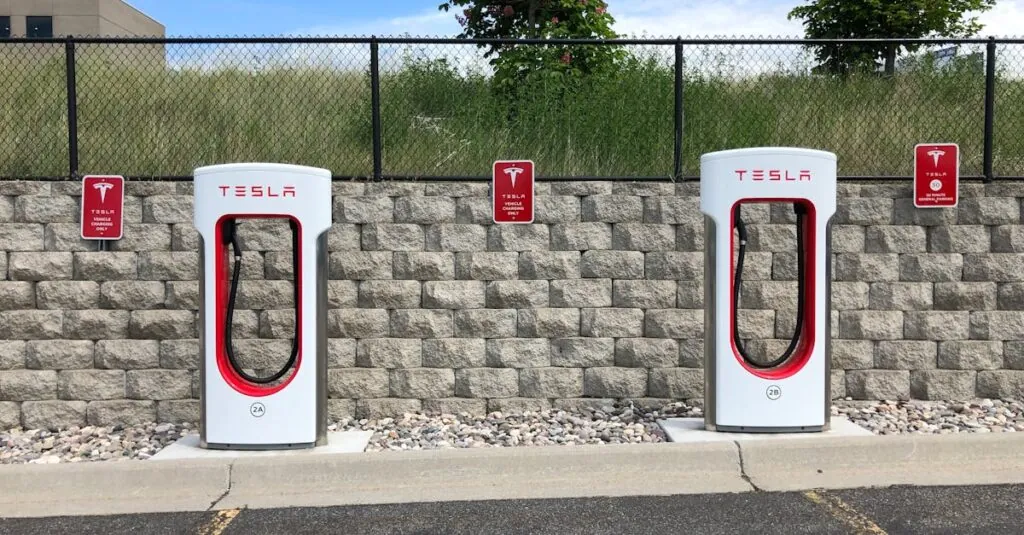In a world where traffic jams feel like a second job and air pollution is the unwelcome guest at every party, sustainable transportation is the superhero we didn’t know we needed. Imagine zipping through your city on a bike, feeling the wind in your hair while saving the planet—talk about a win-win! It’s not just about hugging trees; it’s about making smart choices that keep our air fresh and our wallets full.
Table of Contents
ToggleOverview Of Sustainable Transportation
Sustainable transportation encompasses various eco-friendly travel methods. Biking serves as an excellent example, reducing carbon footprints while promoting personal health. Electric vehicles (EVs) also contribute significantly to lowering emissions, becoming increasingly popular in urban environments. Public transit systems, such as buses and trains, provide efficient alternatives to single-occupancy vehicles, reducing congestion and air pollution.
Cities worldwide are investing in infrastructure to support sustainable methods. Cycling lanes, pedestrian-friendly walkways, and EV charging stations enhance accessibility and safety for users. These improvements not only encourage residents to opt for greener transport but also create vibrant, livable urban spaces.
Pollution reduction stands as one of the primary goals of sustainable transportation. By decreasing reliance on fossil fuels, communities can improve air quality and public health. Studies indicate that regions with robust public transit options experience fewer respiratory issues related to air pollution.
Economically, sustainable transportation offers significant financial savings. Carpooling and bike-sharing programs reduce overall travel expenses for individuals. Moreover, less traffic congestion leads to time savings, enhancing productivity and quality of life.
Adopting sustainable modes of transport ultimately fosters a healthier environment and society. Emphasizing the importance of smart transportation choices, cities can mitigate climate change impacts. Encouraging the shift to sustainable options aligns with global efforts to create a more resilient and eco-conscious future.
Benefits Of Sustainable Transportation
Sustainable transportation provides significant advantages for both the environment and the economy. The adoption of eco-friendly transport modes can lead to lasting change in urban landscapes.
Environmental Impact
Sustainable transportation reduces greenhouse gas emissions significantly. For instance, biking and using public transit decrease the reliance on fossil fuels, contributing to cleaner air and lower pollution levels. Studies indicate that urban areas with robust cycling networks experience a marked decrease in traffic-related emissions. Enhanced air quality fosters better public health, resulting in fewer respiratory illnesses and associated health costs. Additionally, eco-friendly transport options support biodiversity by reducing the land required for traditional road infrastructures, preserving green spaces and wildlife habitats. Not only does sustainable transportation promote environmental stewardship, but it also encourages community engagement towards a more resilient ecosystem.
Economic Advantages
Sustainable transportation enhances economic efficiency through several avenues. Carpooling reduces transportation costs by sharing expenses and lowers the number of vehicles on the road, alleviating traffic congestion. Moreover, electric vehicles often incur lower maintenance costs and provide savings on fuel. Public transit systems not only foster workforce accessibility but also stimulate local economies by attracting businesses and residents to transit-friendly areas. Investments in sustainable infrastructure create numerous jobs in construction and maintenance, generating economic growth. Ultimately, sustainable transportation supports long-term financial savings for individuals and communities while promoting a healthier environment for future generations.
Types Of Sustainable Transportation
Sustainable transportation includes various eco-friendly methods, enabling significant reductions in greenhouse gas emissions and enhancing urban air quality. Below are key types of sustainable transportation options that contribute to a greener planet.
Public Transportation
Public transportation systems, such as buses, trains, and trams, represent an efficient way to move large groups of people. They reduce the number of vehicles on roads, leading to lower congestion and decreased emissions. Buses powered by compressed natural gas and electric trains exemplify how modern transit systems incorporate sustainability. Most cities invest in expanding and enhancing their public networks to encourage more users, improving accessibility and affordability for everyone.
Cycling And Walking
Cycling and walking promote not only personal health but also contribute to eco-friendly commuting. Provision of dedicated bike lanes increases safety, encouraging more individuals to choose bicycles over cars. Walking encourages local exploration while reducing reliance on fossil fuel-powered transport. Numerous cities are transforming urban landscapes, adding greenways and paths that enhance pedestrian accessibility. Communities benefit from the reduced traffic congestion and lower carbon footprints these active modes of transport create.
Electric Vehicles
Electric vehicles (EVs) represent a shift towards cleaner transportation solutions. EVs produce zero tailpipe emissions, making them favorable for urban environments focused on improving air quality. Incentives like tax credits and rebates encourage owners to choose EVs over traditional gasoline-powered vehicles. As charging infrastructure expands, the viability and convenience of EVs for daily commuting increase. Many manufacturers are ramping up production of eco-friendly models, supporting the transition to a sustainable transportation future.
Challenges To Implementing Sustainable Transportation
Implementing sustainable transportation faces several significant challenges that impact the transition to eco-friendly modes of transport.
Infrastructure Limitations
Infrastructure limitations pose substantial hurdles. Many areas lack the necessary facilities for sustainable transport, such as cycling lanes and electric vehicle charging stations. Properly designed infrastructure is crucial for encouraging the use of public transit, walking, and biking. Cities with outdated systems often struggle to adapt, resulting in insufficient support for these eco-friendly modes. Insufficient investment in upgrading transport networks restricts access to alternatives and undermines the potential benefits of sustainable options. Transitioning to a more sustainable model requires targeted funding and strategic planning to build comprehensive infrastructure.
Public Awareness And Acceptance
Public awareness and acceptance play vital roles in advancing sustainable transportation. Many individuals remain unaware of the advantages of eco-friendly methods, such as electric vehicles or biking. Promoting the environmental, health, and financial benefits is essential for fostering a culture of sustainability. Resistance often stems from a lack of understanding or familiarity with alternative transport modes. Educational campaigns and community engagement encourage acceptance and participation in sustainable practices. Increasing public knowledge can shift attitudes, leading to greater adoption of sustainable transportation options in daily life.
Future Trends In Sustainable Transportation
Emerging trends in sustainable transportation reflect a commitment to environmental responsibility. Innovations and policies shape the future of eco-friendly transport.
Technological Innovations
Advancements in electric vehicle (EV) technology drive greater adoption. Enhanced battery efficiency offers longer ranges, making EVs more practical for everyday use. Smart traffic management systems improve the flow of transportation, reducing congestion and emissions. Autonomous vehicles utilize advanced algorithms to optimize routes, further reducing energy consumption. Additionally, innovations in public transport, such as app-based services, streamline user experience and increase ridership. These technologies contribute to an eco-friendly landscape by lowering reliance on fossil fuels.
Policy Developments
Government initiatives play a crucial role in promoting sustainable transportation. Increased investment in public transit systems enables broader accessibility and usage. Incentives for electric vehicle purchases encourage consumers to choose greener alternatives. Legislation targeting emissions reduction sets ambitious goals for cities and countries aimed at lowering carbon footprints. Meanwhile, infrastructure improvements for cycling and walking create safer environments for pedestrians and cyclists, fostering healthier commuting options. Comprehensive urban planning incorporates sustainability principles, leading to more resilient and livable spaces.
Conclusion
Sustainable transportation is not just a trend; it’s a vital shift towards a healthier planet and community. By embracing eco-friendly modes of transport, individuals can contribute to cleaner air and reduced traffic congestion while enjoying economic benefits.
Investing in infrastructure and raising public awareness are essential steps in making sustainable options more accessible. As cities evolve to support greener travel methods, the collective effort can lead to significant improvements in public health and environmental preservation.
The future of transportation lies in innovation and commitment to sustainability, paving the way for a more resilient and enjoyable way to travel.




